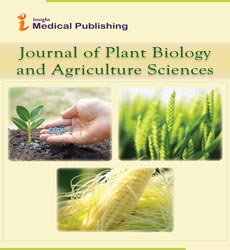Compartmentalized metabolic engineering of plant for rational drug biosynthesis and oral delivery of whole plant material facilitated cost effective malaria treatment
Abstract
The rapid progression of malarial illness and drug-resistant parasites threatens nearly half the global population. Artemisinin, a drug native to Artemisia annua, is highly effective against drug-resistant malarial parasites. Insufficient supply of artemisinin and lack of an anti-malarial vaccine requires development of new alternative sources of production. Furthermore, prohibitively expensive purification process underscores the need for alternative ways of drug delivery. In this study, the chloroplast genome of tobacco was engineered to express the yeast mevalonate (MEV) biosynthetic pathway. The dihydroartemisinic acid (DHAA) biosynthetic pathway was expressed in the same plant via the nuclear genome transformation. Double transgenic (DT) lines with confirmed transgene integration/expression showed 2-3 folds increase in IPP. A high level of an intermediate volatile metabolite amorphadiene (committed precursor to artemisinin) targeted to mitochondria was detected by GC-MS. Efficient conversion of DHAA to artemisinin by photo-oxidation was confirmed by LC-MS/MS analysis. The DT lines grew normally, flowered and set seeds like untransformed plants. The partially purified artemisinin extracts from DT leaves inhibited in vitro growth progression of red blood cells (RBCs) infected with the malaria parasite Plasmodium falciparum. Most importantly, oral feeding of dried plant cells expressing artemisinin reduced the parasitemia levels in challenged mice, facilitating low cost production and delivery of this important life-saving drug. Thus, metabolic engineering utilizing different cellular compartments in plant cells and a synergistic drug delivery approach utilizing bioencapsulation is a novel concept that could be employed in a number of other metabolite based drug studies.
Open Access Journals
- Aquaculture & Veterinary Science
- Chemistry & Chemical Sciences
- Clinical Sciences
- Engineering
- General Science
- Genetics & Molecular Biology
- Health Care & Nursing
- Immunology & Microbiology
- Materials Science
- Mathematics & Physics
- Medical Sciences
- Neurology & Psychiatry
- Oncology & Cancer Science
- Pharmaceutical Sciences
